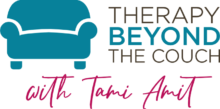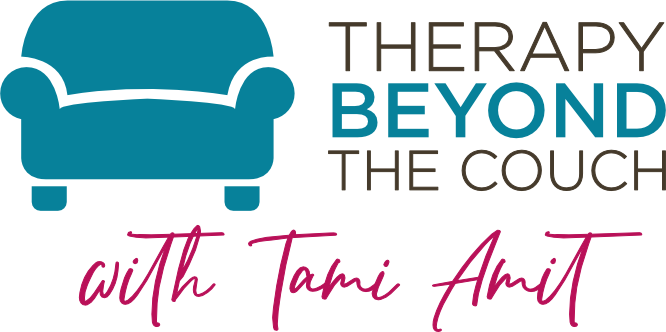The ‘It’s my fault’ core belief
The Core Belief Quiz
The Core Belief that is sabotaging your life and blocking your growth is:
“It’s my fault.”
Dear friend,
Your Core Belief of ‘It’s my fault’ is not a truth but a lie that your brain has been telling you for years. You can come up with hundreds of experiences that supposedly prove this belief, but that is only because it controls what you pay attention (and what parts you ignore), how you interpret the world, and how you make sense of your place in it. That’s why this belief seems valid, but it is not!
Perhaps, there were times when you were a child, when you felt responsible for something bad that has happened, or people in your life explicitly said to you, “It’s your fault” but they were unfortunately and wrongfully projecting onto you their own anxieties and feelings of having no control.
You may already know in your conscious mind that this belief is false (and that’s great) but in your Subconscious Mind, which controls up to 95% of your daily life, this belief is a foundational truth.
And so you continue to attract people and situations to your life that validate the belief “It’s my fault.”
Your own version of this Core Belief may be “I am bad,” “I am useless,” “I am incapable,” or “I am irresponsible”. These are just different versions of the same belief.
Becoming aware of your Core Belief is an essential part of taking back control of your life and creating the life you desire.
About you
You have learned from a young age that you are responsible for the bad things that happen around you. You have developed one of two protective patterns: to avoid all responsibility; or to bear the burden of all responsibility (even when it’s not yours).
You were either the ‘bad seed’ in your family or the over functioning, good kid that took care of everyone and everything (how exhausting that must be). Whichever protective pattern you developed (maybe you even have two opposing personalities, one you show and one you don’t) -your deepest desire is to be accepted.
You likely struggle with anxiety. You take on too much responsibility for other people (even if you try not to) and beat yourself up when things don’t go perfectly. You carry around a good amount of anger (understandably) for the unfairness of the situation – you can use this anger to empower and propel you forward, toward healing, but careful not to get stuck in it! You also carry shame due to the inevitable sense of failure that comes with this Core Belief. It isn’t possible to succeed in all the things you take responsibility for.
You get agitated when people drop the ball, both because it means that you will have to pick it up (again!) and because it reflects your biggest fear back at you.
You have a sensitive, kind heart, and you just want to do a good job and have people be happy with you (and with themselves). The child inside you wants everything and everyone to be okay (and not mad at you).
Sometimes, you wish people would just leave you alone and let you be. But the way to claiming your freedom in life is not about rejecting or withdrawing from others, it is about building a confident and secure self.
You are drawn to people with the core belief “I have no power or control” because your core beliefs fit together like puzzle pieces. When they are overwhelmed, they blame or criticize (it’s their unconscious attempt to feel safe). This triggers your core belief of “It’s my fault,” and you react by either taking the fault (at least one more time) or rejecting it and pushing them away. They in turn, feel that they have no power or control- they blame, or criticize you and the cycle continues.
You create stories in your mind about why certain events occur (even ones that likely have very little to do with you) and you interpret them to mean that it’s your fault. Here are some examples:
“Our team missed the mark- I really dropped the ball”
“I better not join this game- I’ll ruin it for everyone”
“I can see that my partner is angry- it must be my fault”
“She broke up with me because I didn’t do enough”
“My child got hurt because I forgot to tell them to be careful”
“My partner got sick because I didn’t cook them healthy food or make sure they exercised”
What is a Core Belief?
A Core Belief (sometimes called Limiting Belief) is a biased conclusion about yourself created when you were a young child.
Imagine a 5-year-old child signing a contract that determines everything that happens for the rest of his/her/their life. Seems unreasonable, right? Well, that is what a Core Belief is – an interpretation created during a vulnerable age when our understanding of reality is skewed, and incomplete.
Once created, the belief acts as a lens through which you perceive everything that happens to you. Present in every interaction, it automatically poses the question “What bad thing does this says about me?” (The answer is never good!)
Throughout your life, stimuli from either the internal or external environment can trigger this belief or ‘press its button,’ activating feelings of shame, sadness and fear and other detrimental feelings, thus dominating your experience of reality.
You unintentionally communicate your Core Belief to other people, even when your words say the opposite. People unconsciously sense and respond to your Core Beliefs much more than to your words and actions.
All of us have two to three Core Beliefs that control our life and block our growth. Every difficulty or elevated emotion you experience in your home, at work or in any of your relationships is in fact, an activation of one of these Core Beliefs.
Uncovering and releasing our Core Beliefs frees us to create a life that is authentic and joyful.
How is the Core Belief created?
Core Beliefs are created through trauma.
A trauma is any experience (not necessarily something dire such as war, divorce, or a terrible accident) that causes us to feel sad, ashamed, scared, AND alone with our feelings.
In these moments of overwhelm, our subconscious mind attempts to regain a sense of control and safety (called equilibrium) by interpreting the data it receives from the external and internal environment and creating a conclusion about what it means.
That conclusion becomes a core belief.
Once that belief is activated, it becomes the thing we fear the most or our darkest shadow. To ensure that this belief is never again enacted, the Subconscious then creates a set of instructions (called protective strategies). The most common protective strategies are avoiding, sabotaging, deflecting, and attacking.
The general thinking is:
“As long as I do (insert protective strategy), the Core Belief would stay hidden.”
But here is the problem. When first created, protective strategies were useful ways to stay safe, to belong, and to feel supported, but as we mature and as our world expands, the old strategies tighten around us like an old suit that no longer fits, creating disconnection and limitation in our lives.
Instead of disproving the core belief, the protective strategies reaffirm it!
Imagine a teacher telling a child in front of the class, “You are lazy and not worth my time!” As a consequence, the child feels sad, embarrassed, and alone. His/her/their subconscious mind tries to make sense of the experience, thereby creating a conclusion about the self: “I am useless and weak.” To make sure no one ever finds out this “truth,” the child creates a strategy of protection: “I will never let people get close to me so they will never find out I am useless and weak! This strategy keeps their relationships superficial and meaningless, and the child – now an adult – continues to feel useless and weak.
Your task on earth
Uncovering and releasing our core beliefs frees us to create a life that is authentic and joyful. Your task in this life is to unlearn every core belief and assign an opposite that works for you.
For example, below are some opposites for the core belief, “It’s my fault.”
I don’t need to carry all the responsibility
It is not humanly possible that all of this is my fault
I am not responsible for other people’s lives/health/choices/mistakes
Sometimes things are my fault and that is ok because I am a work in progress
It’s not my fault!
Can you come up with 3-5 other opposites for your Core Belief?
How do you Release a Core Belief?
Find a moment when you’re undisturbed and follow these seven steps:
- Repeat the core belief to yourself and notice what feeling comes up.
- Notice where you feel this feeling in your body, and tune into its physical sensation.
- Hold the belief, feeling, and physical sensation in your mind and allow your subconscious mind to lead you back to an earlier time in your life – perhaps even the first time – when you felt that same sensation in that area in your body.
- Once you’ve reached that earlier time (even if the memory makes no sense and/or you’re not sure it really happened), notice this younger version of yourself and tell him/her/them: “I see you. I am here for you. You are no longer alone.”
- Does the younger version of you have a story to tell you? Is there a truth that needs to be spoken? Ask him/her/them, “Is there something you need to say?” Continue this inquiry until the younger version of you has no more to say. Then, offer a hug!
- Now, notice the space that has opened up in your body. Pick one of the opposites of the original core belief or come up with a new one that feels right in this moment. If the new statement had a colour, what would it be?





